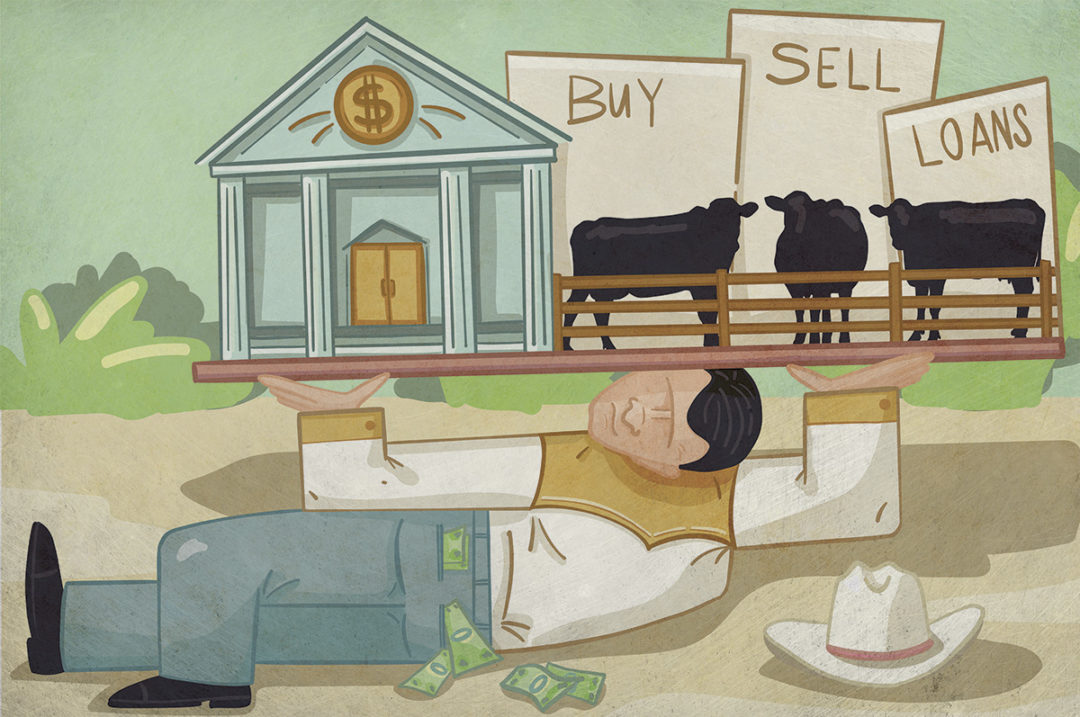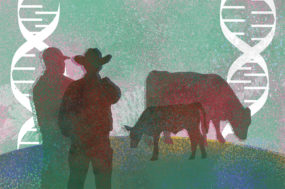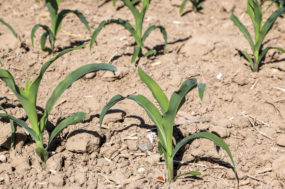Investing in replacement heifers without financially stressing the ranch is every beef producer’s goal. They must consider risks facing the operation, manage their financial health and discover additional income streams the ranch provides.
Reduce exposure to risk
Eric DeVuyst, Ph.D., extension specialist for farm and ranch management at Oklahoma State University, says producers replacing cows or heifers add financial stress to the business when making purchases with cash or credit reserves. If an emergency depletes either of those reserves, another event demanding cash stresses the operation. People borrow money on a note to pay for expensive animals.
“That means that cow, bred heifer or open heifer, will not typically generate enough cash to make the loan payments,” DeVuyst explains. “You’ll have to draw free cash flow from other sources to pay off the note, adding stress to the business.”
If other emergencies occur, such as drought or fire, the producer will use available cash reserves and credit availability to buy expensive feed supplies.
“In 2014-2015, cattle prices were high; then in 2016, they fell back to earth,” DeVuyst recalls. “If I’m buying replacement stock, betting on high prices to make it work, and those prices don’t materialize, I’m in trouble. I’m not saying producers shouldn’t buy replacement heifers. Consider how many you can buy. If producers ramp up slowly, they avoid placing the operation under financial stress, reducing their risk exposure. If they have excess forage, they have options.”
Operators can wean calves on grass, lease a pasture for grazing or stockpile forage for fall and winter grazing. They can bale hay, although that is expensive and the soil does not store phosphorus from growing plants.
DeVuyst recommends using debt-to-equity and debt-to-asset formulas to determine an operation’s financial health and risk. Bankers watch these figures.
“A healthy ranch and financial position keep those numbers low,” DeVuyst explains. “They measure buffer. How much of a shock can I withstand and still have a viable business without putting my banker into a position where he can’t loan more money and has to call in my notes? If my debt is too high relative to equity or assets, it shows the business is unhealthy and in serious jeopardy of failing.”
If a rancher is stressed financially, taking on more debt to buy breeding stock will not improve immediate financial stress; it only worsens. The current debt-to-asset or debt-to-equity will decline with more debt.
“You have a balancing act, and cash flow will deteriorate up to five years as you try to pay off that note,” Devuyst argues. “Balance the need to rebuild with the added risk from additional debt. We’re talking about cash flow. If you pull cash from the business to buy assets over three to five years, that cash has to come from somewhere. Heifers won’t generate enough money to make that happen. That doesn’t mean that over the heifer’s life, it won’t be profitable. While you’re paying off the note, you must get cash from somewhere else.”
Make emotionless, data-driven decisions
Glynn Tonsor, Ph.D., professor in the department of agricultural economics at Kansas State University, says nearly all businesspeople have a relationship with a banker. Most have a 30-year land payment and yearly operating loan to run the operation. Lenders expect to see figures for debt-to-asset and debt-to-equity. The higher the ratios, the closer a rancher is to default, and then bankers have to collect collateral.
“If I had paid off the land, I just have an operation loan,” Tonsor explains. “I present less risk because I have the land as collateral. Conversely, if I have little equity, the numbers reflect that. I’m riskier to lend to. There are variations across producers.”
A significant risk for any calf crop is a drop in sale prices. About 85% of revenue for a cow-calf operation comes from selling calves, heifers and steers in the fall.
“Make sure the operation can withstand the risk of buying heifers,” Tonsor advises. “Know the cost of running a cow for a year and out-of-pocket expenses for an additional 5-year-old female or new heifer. For the cow to make money, know the break-even amount necessary for a calf. If a rancher doesn’t know the cost, he doesn’t know what it takes to cover the expenses.”
Initially, make emotionless but data-driven decisions.
“Use Excel or other programs,” Tonsor recommends. “Be emotionless when you look at the debt-to-equity with your lender. That’s easier said than done; it’s your livelihood that you’ve poured your heart and soul into. Let the data speak. Do your best to table emotional decisions; you’re more likely to make calculated choices. Be aware of cattle cycles. Low cattle numbers later lead to peak cattle populations. That flow in inventory isn’t new. It’s widespread when producers expand the herd. Ranchers may pay more than they wish they had. Learn from past cattle cycles.”
Maintain accurate records
David Anderson, Ph.D., extension economist in the department of agricultural economics with Texas A&M University, says higher interest rates elevate risk.
“Once we’ve borrowed money [to buy livestock], the rate is fixed,” Anderson observes. “From a profitability standpoint, higher rates mean our costs are higher and capital costs for replacement animals are much higher. Think about a cow or replacement heifer as an investment. I could sell her today and get fantastic prices. Or I could keep her, thinking about income from the calves she will have over her lifetime. Those higher interest rates mean the future is worth less. Those future calves aren’t worth nearly as much money as when interest rates are [low]. Higher interest rates make it more difficult to carry a large debt load.”
Anderson believes there are opportunities in this financial climate. Operators may buy less expensive replacements, although that is rapidly changing. Higher replacement expenses mean higher production costs, which producers can spread over the entire herd.
“I could improve my herd’s genetics with the replacements I’m buying,” Anderson reports. “By adding animals, I may more efficiently utilize my ranch’s resources. That provides some offsetting lower costs. Because I’m spreading some fixed costs over more animals, I’m more efficiently using my resources.”
A producer’s actual production costs and profitability may differ from the Schedule F for tax purposes. It may not reflect actual production costs and profitability. “I may want to buy a new tractor,” Anderson explains. “I’ll expense it to pay fewer taxes. But now I’ve increased my production costs and they’ll be with me until I pay off that tractor. That may not be good for the ranch’s profitability from a production cost and profit standpoint. I might have expensed the tractor, reducing my tax burden. The idea of profitability of the ranch, and Schedule F numbers aren’t the same thing.”
Who can ranchers call for financial advice? Ag lenders, farm credit experts, commercial bankers or county extension agents can point operators in the right direction.
Anderson encourages producers to utilize an accurate record-keeping system. “If you have data, you can evaluate your production costs and profits,” Anderson explains. “If you have a sound record-keeping system and [reasonable] budget, the really great expert is you. You’ve built up data you can use to make decisions with.”








